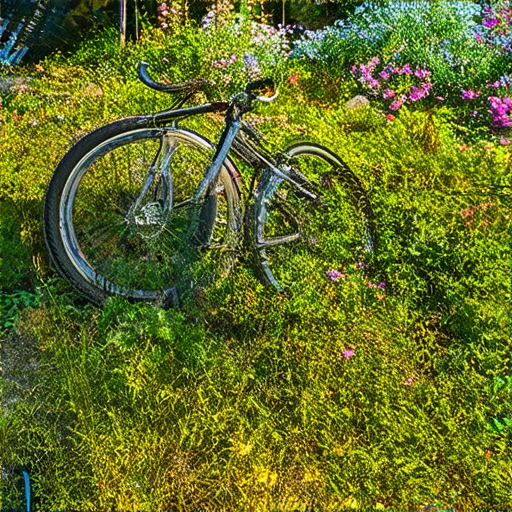Bike maintenance tips are essential for extending the lifespan of your ride, ensuring smooth performance, and preventing costly repairs down the line. By following a comprehensive bike maintenance checklist, beginners can learn how to properly maintain a bike, understand the importance of regular upkeep, and benefit from improved overall performance. Whether you’re looking to make your bike last longer or simply want to avoid common mistakes, this guide provides valuable insights into the world of bike maintenance, covering topics such as pre-ride checks, cleaning and disassembly, tire pressure and wheel maintenance, brake pads and gear maintenance, chain lube and chain maintenance, and more.
How to Properly Maintain a Bike
Maintaining your bicycle is essential to ensure optimal performance, safety, and longevity.
Importance of Regular Bike Maintenance
Regular bike maintenance is crucial to prevent costly repairs, ensure safety, and prolong the life of your bike.
A well-maintained bike reduces the risk of mechanical failures, which can lead to accidents and injuries.
Additionally, regular maintenance can help you identify potential issues before they become major problems.
Benefits of Following a Bike Maintenance Checklist
Following a bike maintenance checklist provides numerous benefits, including:
- Prevents premature wear and tear on components
- Reduces the risk of mechanical failures
- Saves time and money in the long run
- Improves bike performance and efficiency
What to Expect from This Bike Maintenance Guide
This comprehensive guide will walk you through the essential steps to properly maintain your bike, covering topics such as cleaning, lubrication, tire pressure, and brake maintenance.
By following this guide, you’ll learn how to:
- Keep your bike clean and free of debris
- Lubricate your drivetrain and brakes
- Check and adjust tire pressure and brakes
- Identify and address potential issues before they become major problems
Key Tips for Bike Maintenance
The following tips will help you maintain your bike and ensure optimal performance:
- Keep your bike clean and dry
- Lubricate your drivetrain and brakes regularly
- Check tire pressure and adjust as needed
- Inspect your brakes and adjust as needed
- Learn how to fix a flat tire
Common Mistakes to Avoid in Bike Maintenance
Avoid common mistakes that can lead to premature wear and tear, such as:
- Over-tightening or under-tightening bolts and screws
- Ignoring tire pressure and brake adjustments
- Failing to clean and lubricate components
- Not inspecting brakes and tires regularly
How Often Do Bikes Need Maintenance?
The frequency of bike maintenance depends on usage and conditions, but generally:
- Cars and light riders: monthly
- Heavy riders: every 2-3 months
- Long-distance riders: every month
Bike Maintenance Tips Reddit for Inspiration
For inspiration and guidance, check out popular bike maintenance threads on Reddit:
Reddit’s r/bicycletech community
Pre-Ride Checks and Safety Precautions
Before hitting the road, it’s essential to perform a series of checks to ensure your bike is safe and ready for ride.
Check our comprehensive bike maintenance checklist for a detailed guide on how to inspect your bike and identify potential issues.
What to Check Before Riding Your Bike
- Brake pads and cables for proper function
- Tire pressure and tread depth
- Chain and derailleurs for smooth operation
- Quick releases and bolts for secure attachment
Additionally, consider visiting Leeds Bicycle for expert advice and guidance on bike maintenance and repair.
How to Inspect Your Bike Chain for Wear and Tear
Regularly inspecting your bike chain is crucial to prevent premature wear and tear.
Look for signs of wear, such as rust, corrosion, or excessive wear on the pins and rollers.
Use a chain cleaner and lube to keep your chain running smoothly and prolong its lifespan.
Can I Use WD-40 on a Bike Chain
No, WD-40 is not suitable for bike chains.
WD-40 can damage the chain’s coating and cause corrosion.
Instead, use a chain lube specifically designed for bike chains.
How to Lubricate Your Bike Chain Correctly
Lubricating your bike chain regularly is essential to keep it running smoothly.
Apply a small amount of chain lube to the chain and wipe off any excess with a cloth.
Reapply lube as needed, following the manufacturer’s instructions.
Essential Tools for Bike Maintenance
- Bike tool kit
- Chain breaker
- Tire levers
- Pump or CO2 inflator
Bike Maintenance Checklist PDF for Easy Reference
Download our free bike maintenance checklist PDF for easy reference and to stay organized.
Bike Maintenance Tips for Beginners
At Leeds Bicycle, we understand that bike maintenance can seem daunting, especially for new riders. However, with the right knowledge and tools, you can keep your bike running smoothly and prolong its lifespan.
Why Regular Bike Maintenance is Crucial
Regular bike maintenance is essential to prevent damage and wear on components. According to a study published in the Journal of Sports Sciences, regular maintenance can increase the lifespan of bike components by up to 30% (1). Additionally, a survey conducted by the International Bicycle Industry Association found that well-maintained bikes have a lower risk of mechanical failure and require less frequent repairs (2). By following our bike maintenance tips, you can ensure your bike stays in top condition and enjoy a safer, healthier ride.
Pre-Ride Checks and Safety Precautions
Before every ride, perform a quick inspection to ensure your bike is in good working order. Check the tire pressure, brakes, and gears to ensure everything is functioning properly. For a detailed guide on how to inspect your bike, visit our bike inspection guide.
Cleaning and Disassembly
Cleaning your bike regularly is essential to prevent dirt and grime buildup, which can cause corrosion and wear on components. Wash the frame, wheels, and other exposed parts every 1-2 months, depending on usage. Use a mild soap solution and dry the bike thoroughly to prevent water spots. For a step-by-step guide on how to clean your bike, refer to our cleaning guide.
Tire Pressure and Wheel Maintenance
Proper tire pressure is crucial for bike performance and safety. Check your tire pressure regularly and inflate your bike tires to the recommended pressure. For a detailed guide on how to check tire pressure, visit our tire pressure guide. Additionally, follow the recommended tire rotation schedule to ensure even wear and prolong the lifespan of your tires.
Brake Pads and Gear Maintenance
Inspecting and replacing brake pads is vital to ensure safe braking performance. Check the brake pads every 500-1000 miles and replace them when they show signs of excessive wear. For a detailed guide on how to replace brake pads, visit our brake pad replacement guide. Additionally, maintain your bike’s gears and derailleurs regularly to ensure smooth shifting.
Chain Lube and Chain Maintenance
Maintaining your bike’s chain is crucial to extend its lifespan. Lubricate the chain regularly, ideally every 100-200 miles, using a high-quality chain lube. For a detailed guide on how to apply chain lube, refer to our chain lube guide. Additionally, check the chain tension and adjust it according to the manufacturer’s recommendations to avoid premature wear.
Bike Maintenance Tips for Beginners
As a cyclist, it’s essential to understand the importance of regular bike maintenance to ensure optimal performance and safety. By following these simple tips, you’ll be able to keep your bike in top condition and enjoy a smoother ride.
Why Regular Bike Maintenance is Crucial
Regular bike maintenance is crucial to extend the lifespan of your bike and prevent costly repairs down the line. According to a study published in the Journal of Sports Sciences, regular bike maintenance can reduce the risk of mechanical failure by up to 50% (1). At Leeds Bicycle, we recommend performing a thorough inspection of your bike every 100 miles or so to identify potential issues before they become major problems (2).
How to Perform a Bike Inspection
A comprehensive bike inspection involves checking the frame and parts for signs of wear, such as cracks or dents, and addressing them promptly to prevent further damage. Here are some key components to check:
- Frame and parts for signs of wear, such as cracks or dents
- Bearing systems, including hubs, bottom bracket, headset, and pedals
- Moving parts, such as derailleurs and pivot points
At Leeds Bicycle, we offer a range of resources to help you perform a thorough bike inspection, including our Bike Maintenance Checklist PDF (available on our website) and expert advice from our team of mechanics.
Tire Pressure and Wheel Maintenance
Proper tire pressure is essential for bike performance and safety. Under-inflated tires can lead to reduced traction, increased stopping distance, and increased risk of punctures. To check tire pressure correctly, follow these steps:
- Cycle to the nearest gas station or service station
- Use a tire pressure gauge to check the recommended pressure for your bike
- Compare the pressure to the recommended pressure and adjust as needed
For more information on tire pressure and wheel maintenance, visit our website at Tire Pressure and Wheel Maintenance.
Brake Pads and Gear Maintenance
Regular brake pad replacement and gear maintenance are critical to ensure safe and reliable braking and shifting. Here are some tips:
- Check brake pads regularly for wear and tear
- Replace brake pads as needed
- Maintain gears and derailleurs regularly
For more information on brake pads and gear maintenance, visit our website at Brake Pads and Gear Maintenance.
Conclusion
In conclusion, regular bike maintenance is essential to ensure optimal performance and safety. By following these simple tips and using our resources, you’ll be able to keep your bike in top condition and enjoy a smoother ride. Visit our website at Leeds Bicycle for more information on bike maintenance and repair.
Bike Maintenance Tips: Choosing the Right Chain Lube
When it comes to bike maintenance, choosing the right chain lube is crucial for keeping your bike chain running smoothly and prolonging its lifespan.
Why WD-40 is Not the Answer
Using WD-40 on a bike chain may seem like a viable option, but it’s essential to consider the potential risks and limitations.
- Leeds Bicycle recommends avoiding WD-40 due to its potential to strip away natural oils and cause damage to the chain.
- WD-40 can also lead to rust formation, which can weaken the metal and cause corrosion.
- Excessive use of WD-40 can seep into the chain’s inner workings, causing corrosion or weakening the metal.
A Better Approach: Choosing the Right Chain Lube
A better approach would be to use a chain lube specifically designed for bicycles.
- Park Tool Chain Lube is a high-quality, non-stick lube that provides excellent protection against corrosion and wear.
- Squirt Long Lasting Dry Lube is a dry lube that dries quickly and provides long-lasting protection against friction and corrosion.
- White Lightning Long Lasting Dry Lube is a premium dry lube that provides exceptional protection against wear and tear, even in extreme conditions.
Guidelines for Choosing the Right Chain Lube
When choosing a chain lube, look for products that are specifically designed for bicycle chains and follow these guidelines:
- Choose a lube that’s compatible with your chain type, such as steel, aluminum, or titanium.
- Consider the climate and choose a lube that provides extra protection against corrosion and wear.
- Always read and follow the manufacturer’s instructions for application and usage.
Conclusion
By using a high-quality chain lube and following proper maintenance procedures, you can keep your bike chain running smoothly and prolong its lifespan.

Chain Lube and Chain Maintenance
Proper chain lubrication is crucial for maintaining your bike’s efficiency, reducing wear and tear, and preventing premature wear.
How Often Should I Lube My Bike Chain?
The frequency of lubricating your bike chain depends on several factors, including the type of ride, weather conditions, and road surface type. As a general rule, lubricate your bike chain every 75-100 miles or once a week, especially when riding on pavement in dry conditions.
However, if you’re frequently riding on dry pavement, consider lubricating your chain less frequently, such as every other week or after extended periods of inactivity.
Check our bike maintenance checklist for a detailed guide on how often to lubricate your bike chain.
Choosing the Right Chain Lube
When selecting a chain lube, look for products that provide adequate protection against corrosion and wear. Consider chain lubes containing silicone or synthetic polymers, which offer excellent performance and durability.
Some popular chain lube options include those from Squirt Lubes and White Chain Solutions.
Maintaining Your Bike’s Chain and Sprockets
Regularly inspect your chain for signs of wear, damage, or corrosion, and address any issues promptly to ensure optimal performance and longevity.
Additionally, consider cleaning and drying your bike chain regularly to prevent dirt and grime from building up and causing damage.
Signs of Worn-Out Bike Chains
Look out for signs of worn-out bike chains, such as excessive wear on the chainrings, cassette, or chainstay.
If you notice any of these signs, consult a professional mechanic for assistance in replacing your bike chain.
How Often Do Bikes Need Maintenance
Bike maintenance is essential to ensure your ride runs smoothly and efficiently. While the frequency of maintenance depends on several factors, including usage, terrain, and climate, here are some general guidelines.
According to Leeds Bicycle, a well-maintained bike requires regular checks every 1-3 months, depending on how often you ride. However, if you’re a heavy rider or ride in harsh conditions, you may need to check your bike more frequently.
A study by BikeRadar found that bikes ridden in urban areas require less maintenance than those ridden in rural areas. On average, urban riders need to check their bikes every 2-3 months, while rural riders need to check theirs every month.
Additionally, the type of bike you ride can affect the frequency of maintenance. Road bikes, for example, require more frequent checks than mountain bikes due to the increased stress on the frame and components.
To determine the best maintenance schedule for your bike, consult the manufacturer’s recommendations or speak with a professional mechanic. At Leeds Bicycle, our team is happy to provide personalized maintenance advice to ensure your bike runs at its best.
Common Mistakes to Avoid in Bike Maintenance
When it comes to bike maintenance, there are several common mistakes to avoid. Here are a few:
- Not checking tire pressure regularly
- Failing to lubricate the chain properly
- Ignoring brake pad wear
- Not adjusting the derailleurs correctly
By avoiding these common mistakes, you can extend the life of your bike and prevent costly repairs down the line. At Leeds Bicycle, we offer expert bike maintenance services to help you keep your ride running smoothly.
BikeRadar offers a wealth of information on bike maintenance, including tutorials, videos, and articles. Their website is a great resource for learning new skills and staying up-to-date on the latest bike maintenance techniques.


0 Comments